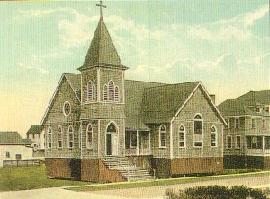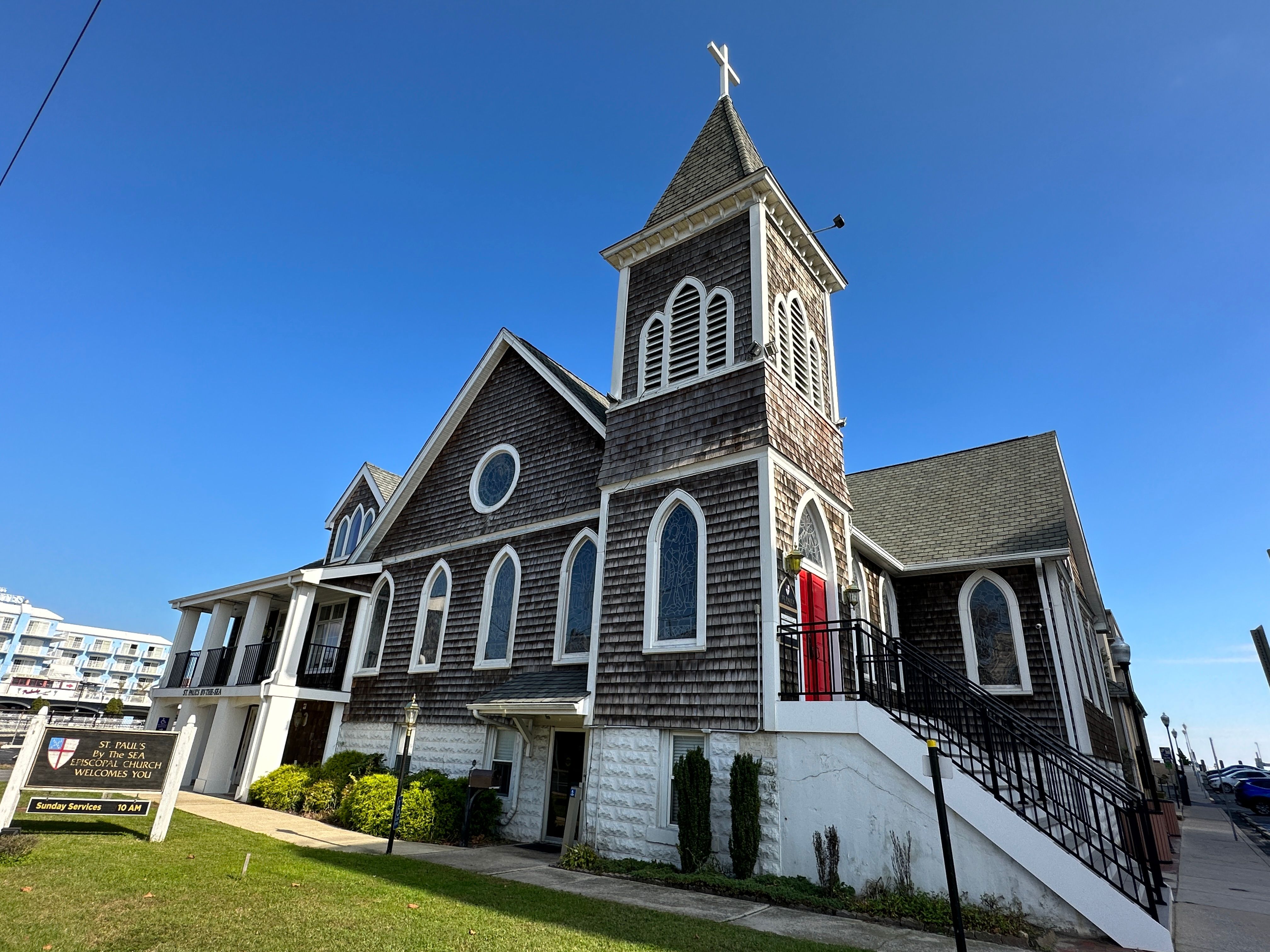History and Architecture
By 1881, a small mission church was built near the hall with summer services led by the rector of St. Paul’s church in the larger neighboring town of Berlin. An early church parochial report indicates that this building could seat 300 and was worth about $2000. The church’s congregation was transient, according to the report.
Eighteen years later – in 1898 – John Waggaman of Washington D.C. donated to the congregation two lots “up the beach” at Baltimore Avenue and Third Street, the church’s present-day location.

The cornerstone for the new church was laid on June 6th, 1900, and the first service was held July 7th the following year. This new parish was considered a “mission church” in the Diocese of Easton until 1924, when it was recognized as an independent parish and began to receive its own rectors.
The original church rectory was built on Third Street in 1913, but was razed to the ground in 1973 to provide the site for the parish hall named in honor of Rev. William Dewees. A new rectory on Baltimore Avenue was completed in 1923 and housed the parish’s offices until November 2013.
On November 26th, 2013, a fire in the rectory claimed the life of the rector, Father David Dingwall. The Chuch Sanctuary and Undercroft have since been rennovated. On Christmas Eve 2014, the congregation was given special permission to return to the Church Nave to hold that one Christmas Eve Service. A short time later they were granted clearance to return to the Church Nave and now hold two services each Sunday.

Architecture
“St. Paul’s By-The-Sea is a Gothic Revival wood-shingled church which has survived with only minor alterations in its wood-shingled exterior,” writes architectural historian Paul Touart. “The corner bell tower and entrance are notable for their pointed-arch openings. The sides of the church are also defined by the pointed-arch stained glass windows.
The interior of the church features lower oak wainscoting and white plaster walls — providing a warm, inviting, and tranquil atmosphere. In the main aisle, red carpeting extends from the entrance to the chancel. An early porch on Third street was closed to provide additional seating in the sanctuary.”
Improvements to the church building following its 1900 construction include the removal of wooden pilings and the construction of basement rooms used for Sunday school instruction. Closing the exterior porch between the bell tower and the church proper added additional seating in the church.
The altar was presented to the church in 1903 by the Women’s Auxiliary of the Diocese of Easton and was made of quartered oak. The first memorial gift to the church was the Baptismal font, which was given in 1893 by Josephine L. Massey, proprietor of the Hamilton Hotel, located on 3rd street and the boardwalk. The font is made of Italian marble and bears the inscription “To the Glory of God, and in loving remembrance of my little daughter, Florence Massey, 1875-1880” The Eagle Lectern was given in 1927 by Josephine L. Massey’s son, J. Alan, in her memory.
The credence table, and altar rail were donated by the Junior Guild of St. Paul’s by-the-Sea and installed in 1944. The brass altar cross (which no longer sits on the altar) dates from 1906 when it was obtained by Reverend Howard G. England and presented to the church. The communion service, which is engraved “To the Glory of God and in Loving Memory of Corella Wynee Seeger, Departed in Life May 15th, 1925,” was given by Paul Seeger of Baltimore. The Moeller organ was installed in 1947-48 and was a gift of members of the parish. The columbarium was placed in the chapel in 1988.
A short biography about SPBTS stained glass windows by Diane Savage.